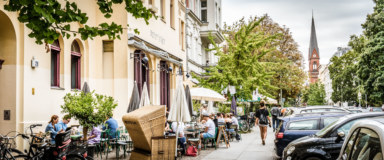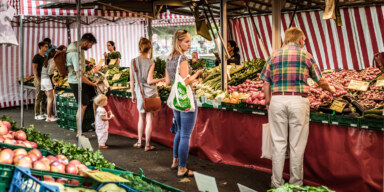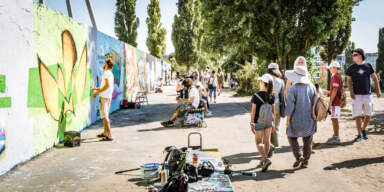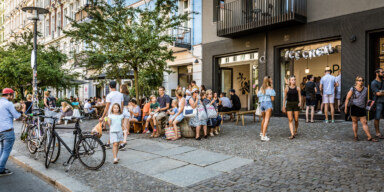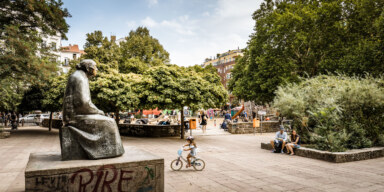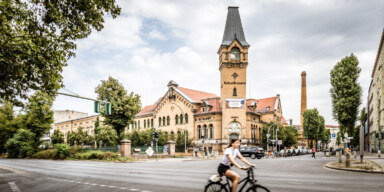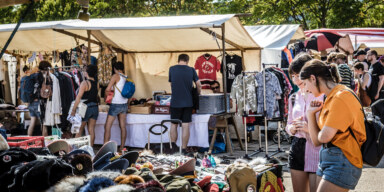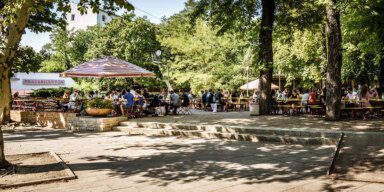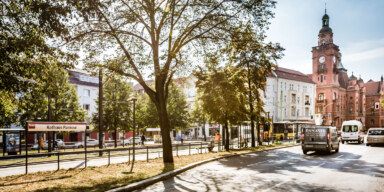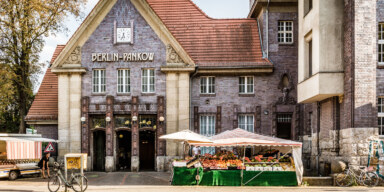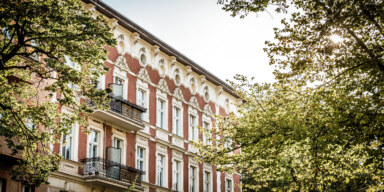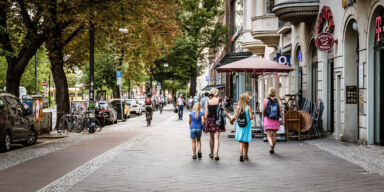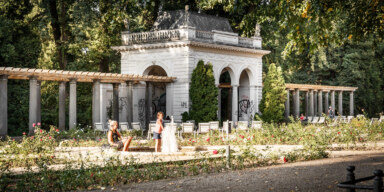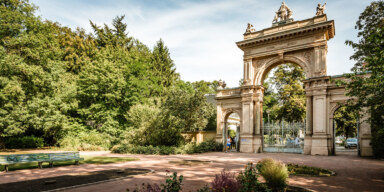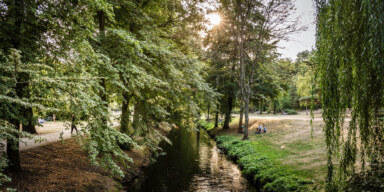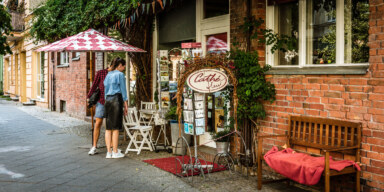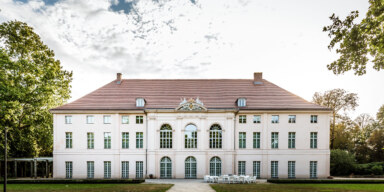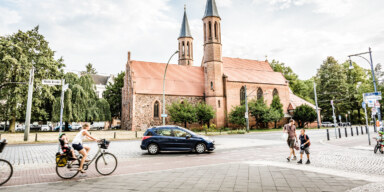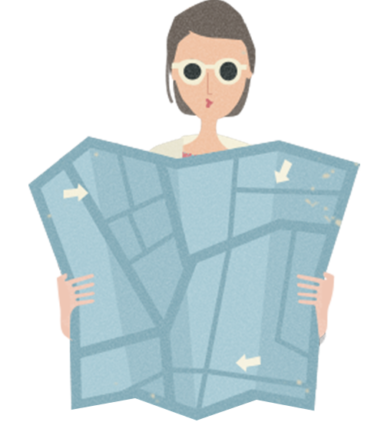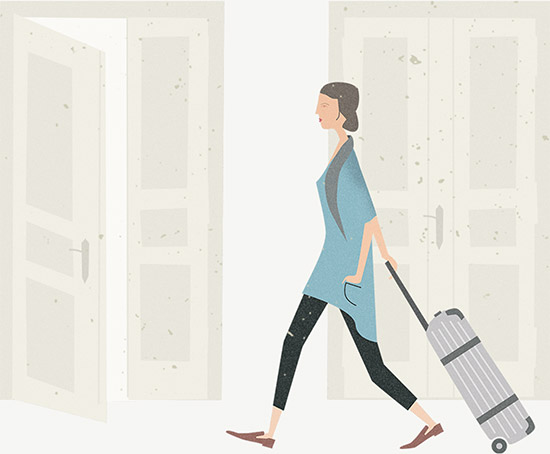Prenzlauer Berg
The happy one
Hardly any other district has seen so much change after the “Wende”: over 85 percent of Prenzlauer Berg’s original residents had to leave because they could no longer afford its soaring rents. Formerly a deprived working-class area of crumbling Socialism, it is now middle-class Bohemia in spruced-up 19th-century buildings. The students and artists who squatted in empty houses after re-unification are now established income-earners and live side by side with people from France, the UK, Italy, Spain, Denmark and America. The United Nations of Prenzlauer Berg.
Swabians, too, can be seen – and heard – in the area. New arrivals from the South soon became fervent parochialists, converting their district into an organic zone. No chance for sprayed vegetables here. Prenzlauer Berg residents are into healthy living: Organic food, fresh juice, yoga studios and shiatsu to go.
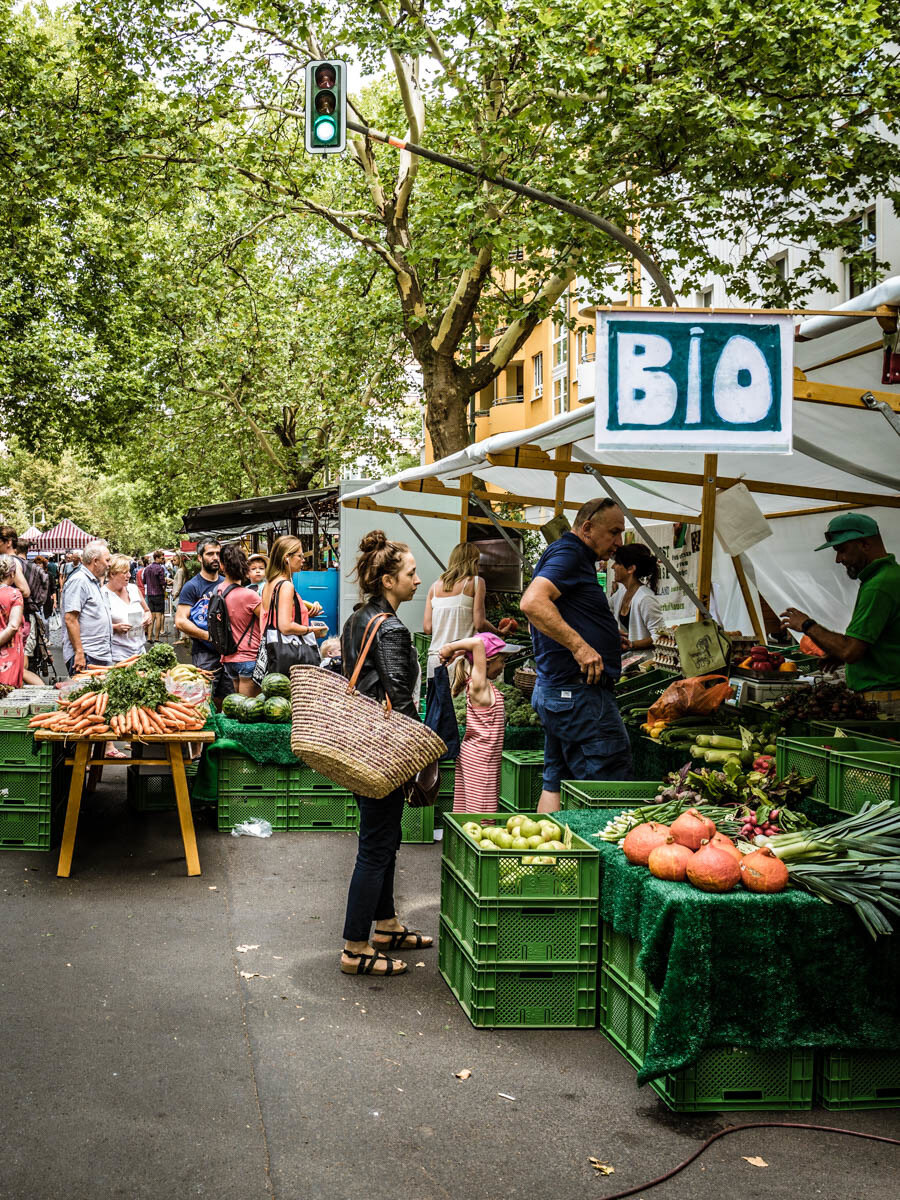
» The epicentre of it all is Kollwitzplatz. Lurking behind every corner is a restaurant, threatening to wipe out your cooking skills once and for all. Prenzlauer Berg with its lifestyle restaurants and trendy bars is a constant temptation. «
The epicentre of it all is Kollwitzplatz, a square named after the famous graphic artist and sculptor Käthe Kollwitz who used her expressive art to combat war, poverty and exploitation. A memorial plaque marks number 58, Kollwitzstraße, where she and her husband, a renowned physician, lived for many decades. The weekly market on Kollwitzplatz has an impressive range of fresh organic produce from the region. There is a high concentration of restaurants here, and the cafés with their inviting terraces create an almost Mediterranean atmosphere.
In colourful bistros you meet project planners complete with laptop and latte, and cheerful mums in designer sunglasses. At “SexyMama’s” they sell pregnancy fashion, and the tantrum-throwing toddler in the playground is now more likely to be called Tim Torben Vincent than Kevin. Life is laid-back, and weekend birthday parties in the park are usually lavish and feature 99 balloons. Prenzlauer Berg is the capital’s district with the most children, and a popular residential area for young families.
Right on the edge of Kollwitzplatz the air smells of happiness: Allan’s Breakfast Club. The atmosphere is easy-going and the staff are lovely. Punters are as international as the menu. Allan is a kind Frenchman who has spent 20 years in Australia and has imported the casual lifestyle from down under back to Berlin. Step in and enjoy. Fresh bakery products, French toast, eggs Benedict and out-of-this-world sweet treats. For the Jewish gourmet community the place has the best chachuka in town. Welcome to Allan’s crowded breakfast heaven. Here you can taste, hear and see the spirit of Prenzlauer Berg. And there is another reason why Rykestraße is famous: it is the site of Europe’s second largest synagogue, which has weathered the war and the Nazis almost unscathed.
Kastanienallee has come a long way. Nowhere do you find as many young actors, in fact young people in general. The bakery’s name is Placebo, the hairdresser’s is Vokuhila (from the 80s’ haircut “Vorn kurz, hinten lang” – short in front, long at the back). For clothes, go to the “Eisdieler”, on the premises of a former ice cream parlour where they sell hot fashion items made in Berlin. Lunch can be had at the Fish Factory, and good quality coffee is served at Bonanza Coffee.
If you are now craving something sweet, go to Hedwig’s to try out the latest ice cream flavours: Cucumber and ginger, or Madagascar chocolate with goat’s milk and sea salt. Still hungry? The Coffee Room has freshly made salads, seasonal soups and home-made cake served in a cosy living-room ambience.
Lurking behind every corner is a restaurant, threatening to wipe out your cooking skills once and for all. Prenzlauer Berg with its lifestyle restaurants and trendy bars is a constant temptation.
Make a new discovery every day. Such as the “Oderberger”. Opened in 1902 as a public bath, it is now a boutique hotel cum luxury swimming pool and offers excellent country-style food. Dining takes place on three galleries in the former boiler house, under 15 metre high ceilings and with ancient valves and fittings gracing the brick walls. Fine dining indeed.
“P-Berg” is delightfully diverse. It has highly attractive older properties, modern apartment complexes, bright sunny studios, town houses with a garden, and listed back-yard warehouses. The infrastructure is excellent as every part of Berlin can be comfortably reached by underground, S-Bahn, tram or bus. Of course, rents are going up almost daily here too, but coming home still has a large choice of unique and affordable flats on offer.
To ensure that the old days are not completely forgotten, a museum in a brewery (Kulturbrauerei) presents an exhibition entitled Everyday Life in the GDR. It showcases everything from the Trabbi car to plant stands, egg cups, Rotkäppchen sparkling wine and Spee washing powder. Things that now appear to be from a different country, made when rundown “Prenzlberg” was earmarked for demolition to make room for “modern” concrete blocks. In the nick of time, however, the peaceful revolution came about, and Germany’s largest coherent late-19th century quarter was saved – luckily. And it was turned into an inspiring piece of Berlin. Happy the people who live here.
» Rundown “Prenzlberg” was earmarked for demolition to make room for “modern” concrete blocks. In the nick of time, however, the peaceful revolution came about, and Germany’s largest coherent late-19th century quarter was saved – luckily. «
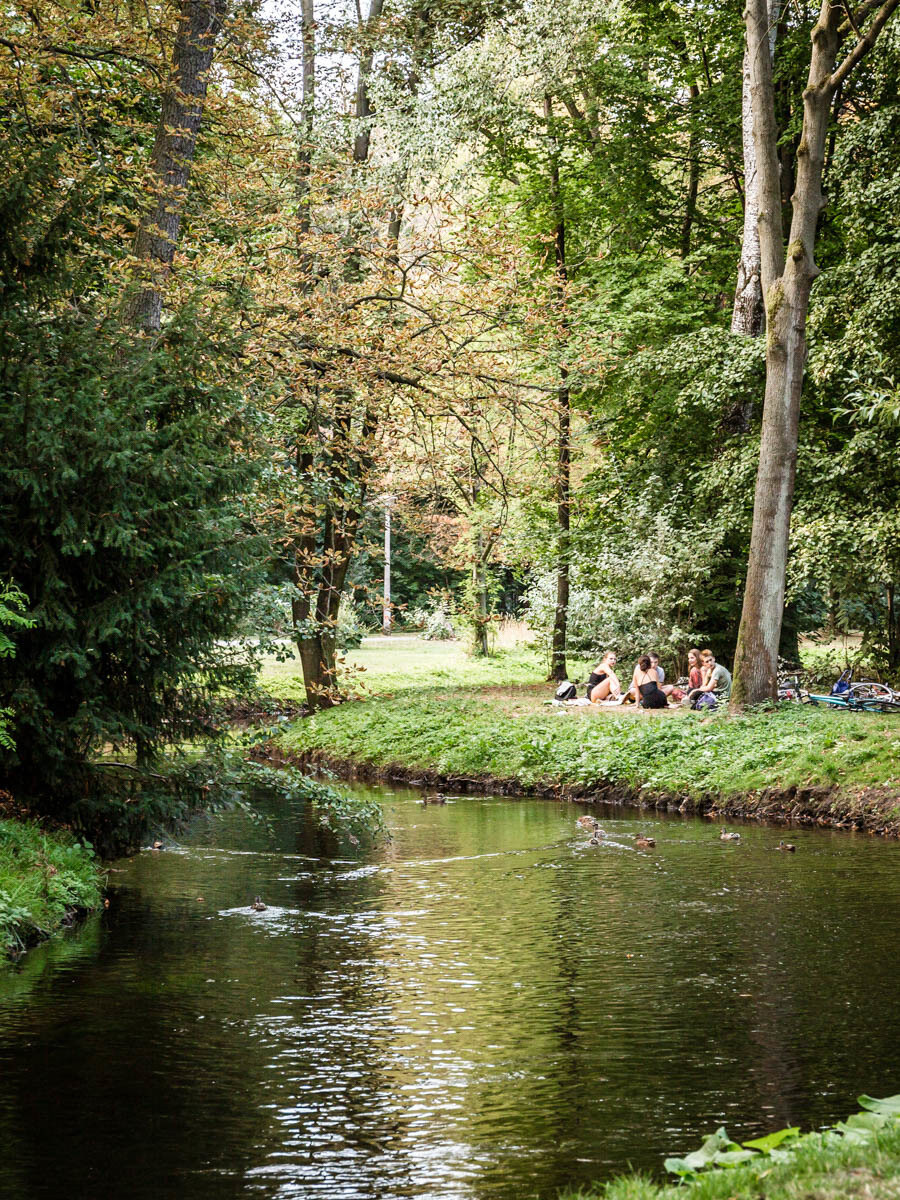
Pankow
The rediscovered one
“Excuse me, is this the special train to Pankow“ is the beginning of Udo Lindenberg’s version of the Chattanooga Choo-Choo song. What other part of Berlin can claim to have been made famous by a Lindenberg song? City magazines refer to “Pankowland” as the most charming part of Berlin. You live in Pankow, work in Mitte and cycle to Prenzlauer Berg for supper. Despite being so close to the centre, Pankow has retained its idyllic suburban charm. Quality of life is high, and the area is becoming ever more popular with young families. Here’s how it goes: Couples with no child start off in a flat in Mitte, if child number one is on the way they move to Prenzlauer Berg, and if number two arrives they look for a place in Pankow. If there is a third one, things begin to get a bit crowded, but then again, Berlin is a large city …
The “Florakietz“ has become a miniature version of Prenzlauer Berg. Take a walk and enjoy its pleasant cafés, second-hand shops, restaurants and small shops. It still has some catching up to do when it comes to trendiness, but even now the difference between Prenzlauer Berg and Pankow people is hardly noticeable. Mums with children and young academics toting a latte on their way to the S-Bahn station. Six stops to Alexanderplatz.
Pankow’s history is remarkable. The village centre dates back to the 13th century, its red brick parish church with its twin spires forms the medieval backdrop to Berlin’s oldest weekly market. A site worth visiting is the Schönhausen palace, the erstwhile residence of Queen Elisabeth Christine, Frederick the Second’s despised consort: “…my old cow!” The Nazis infamously used the palace as depot for “degenerate art” to store hundreds of paintings. After World War 2 it became an officers’ mess for the Soviet army, then a Russian boarding school, and later the official residence of the first and only president of the GDR, Wilhelm Pieck. His office has been restored and is now open to the public, complete with upholstery and glass chandeliers. The queen’s apartments, too, can be visited. Official visitors like Ho Chi Minh, Nikita Khrushchev, and later Mikhail Gorbachev and his wife Raissa dined in its ornate reception hall. Importantly, this was also the place where a crucial document was negotiated: the German re-unification treaty. A little-known insider tip for recreation seekers is the Niederschönhausen Palace Park and adjacent swimming pool, Sommerbad Pankow. Replacing the former Baroque-era gardens, Peter Joseph Lenné, the brilliant green-fingered landscape architect, created an extensive park here with tranquil walks along the River Panke and large sunbathing lawns and picnic areas.
» City magazines refer to “Pankowland” as the most charming part of Berlin. You live in Pankow, work in Mitte and cycle to Prenzlauer Berg for supper. «
» Good transport connections and green surroundings make Pankow a popular residential area. It has extensive parks, beautiful old buildings, classy newbuild apartments, some old mansions, generously dimensioned residential estates and single-family homes. «
Not quite as grandiose but still rather classy are the reception rooms in the residence of Fritz Heyn, a former manufacturer of wicker material for chairs. The house, complete with all its furniture, is now a pleasant little museum in the street of the same name. Until 1972 the two original salons were inhabited by his daughter. A visit to the rooms and garden of number 8, Heynstraße, is an impressive journey back in time and into the life led by its wealthy 19th century residents. Not far from here is the Alte Mälzerei, the old malthouse, an industrial monument dating back to 1874. It’s as impressive as a medieval fortress and recalls the Industrial Revolution. The listed building where malt was once roasted for the Schultheiss brewery has now been turned into an apartment complex. The lofts offered by coming home here are in great demand.
Good transport connections and green surroundings make Pankow a popular residential area. It has extensive parks, beautiful old buildings, classy newbuild apartments, some old mansions, generously dimensioned residential estates and single-family homes. Rents have risen in recent years but are still far more moderate than those of Prenzlauer Berg and Mitte. You live on the outskirts but are still only a stone’s throw away from Alexanderplatz. A place where you can relax and leave the daily hassle of the city behind.
Pankow was the Bonn of the GDR. Up until the Sixties, the Majakowskiring was populated by Communist leaders like Walter Ulbricht, the two Erichs (Honecker and Mielke), Otto Grotewohl et al – an exclusive gated community behind a barrier, living in splendid old mansions reserved for the top brass of the GDR establishment. It was not until 1960 that GDR leaders decided to leave their golden ghetto and to move to a specially-built, secret (!) estate in the Wandlitz forest – secluded and philistine. And before you ask, coming home has no apartments to offer there.
Pankow is a part of Berlin that has a special status and a checkered history. It once was the Beverly Hills of the GDR élite, with the likes of Hanns Eisler, Arnold Zweig, Christa Wolf, Johannes R. Becher and Heiner Müller among them. Today, Pankow is again an address for celebrities. Representing German cinema, Christiane Paul, Jasmin Tabatabai, Nora Tschirner, Maria Schrader. Representing left-wing politics, Jürgen Trittin and Gregor Gysi. The new Pankow patrons.
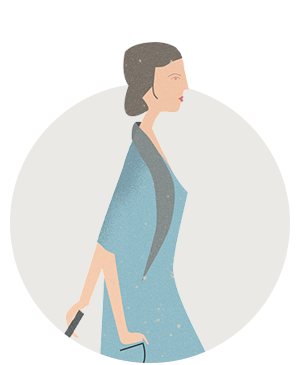
Renting an apartment – simple and secure
We at coming home will do our utmost to support and advise you. Our website provides you with a wealth of useful tipoffs for your apartment search, and tells you more about our free-of-charge services.
Infos for tenants
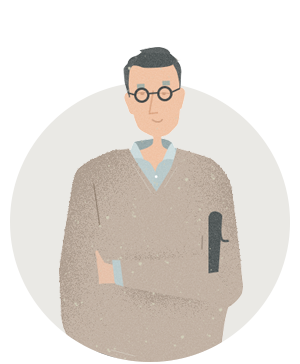
Secure lettings
If you wish to offer a furnished property for rent we are at your side throughout the tenancy process and ensure you get the best possible advice and support.
Infos for landlords

Magazine
Care to find out how other Berliners live? Read our series of personal home stories and get to know some extraordinary habitats and their creative residents in our magazine: “How people live Berlin”
Magazine
